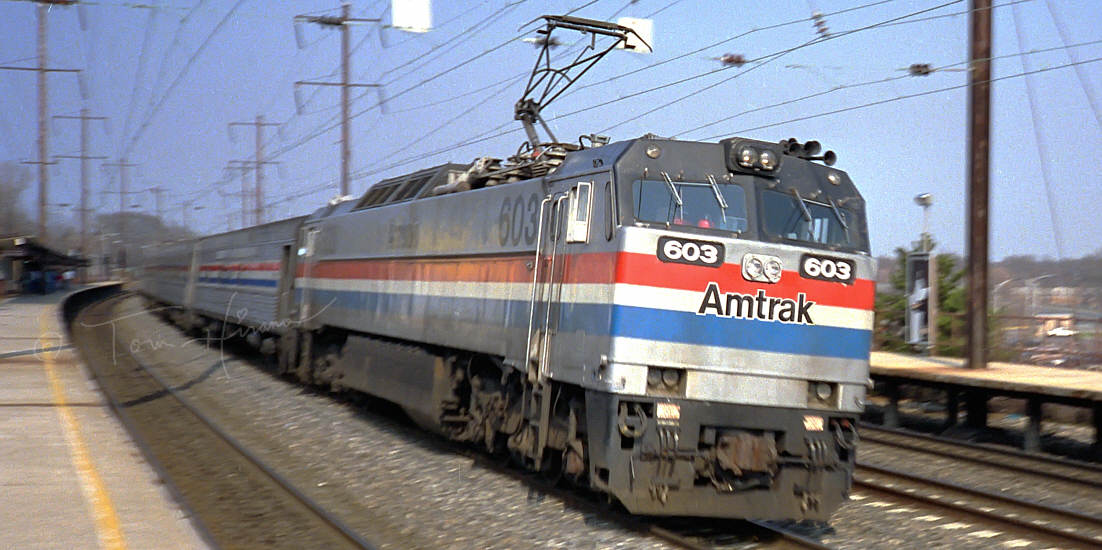GG-1 escape plan
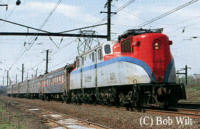
At the time of Amtrak's inception, the Northeast Corridor line was powered by GG-1 electric locomotives acquired from the Pennsylvania Railroad.At the time, the GG-1 had been in production for nearly 40 years and was becoming increasingly obsolete, so a plan to replace it was hatched.And the United Statesgeneral electric companyis ricemaskingum powerWe decided to manufacture the E60CP based on the E50C electric locomotive, which has a proven track record.
E60CP specifications
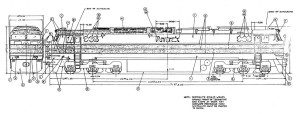
Amtrak wanted faster speeds, higher output, and support for multiple power supplies.Therefore, the gear ratio of the E60CP was set to a maximum speed of 120mph (194km/h), which exceeds the GG-1's maximum speed of 100mph (160km/h).The output is 7650 horsepower (6000 hp on average), which exceeds the GG-1's 4920 hp.It is compatible with both the old Pennsylvania Railroad standard 25Hz and standard 60Hz power supplies, and is designed to be used in 12,500V 25/60Hz AC and 25,000V 60Hz AC sections.Total length: 21m, weight: 176t.
Units 950-956 are E60CG with heating boiler (steam generator)*Manufactured as.
Units 957-975 are E60CH equipped with a cabin generator (Head end power).*It was manufactured as.
note:*Some fans may refer to the Steam Generator specification as E60CP and the Head End Power specification as E60CH.
E60CP trial run derailment
In December 1974, the first E60CP locomotive began trial operation. 26 cars will be introduced one after another.However, on February 24, 1975, the rear bogie of Unit 950 derailed just after the 105 mph test run began.After investigation, it was determined that the cause was a defect in the bogie spring, but it was determined that it would be difficult to correct the problem because the defect was due to the balance with the weight of the main body.American Railroad Transportation Administrationauthorized the use of the E60CP in November 1975, subject to a speed limit of 85 mph (137 km/h).Eventually, the speed was lower than GG-1, and consideration was given to introducing another electric locomotive (later AEM-7).
Variations of E60CP
Externally, there have been two changes, mainly around the lights.In terms of paint, there are two types of Phase 2 paint: one without "Amtrak" letters on the front, and one with "Amtrak" letters on the front.There are two types of Phase 3 paint: thick Amfleet band and standard band.
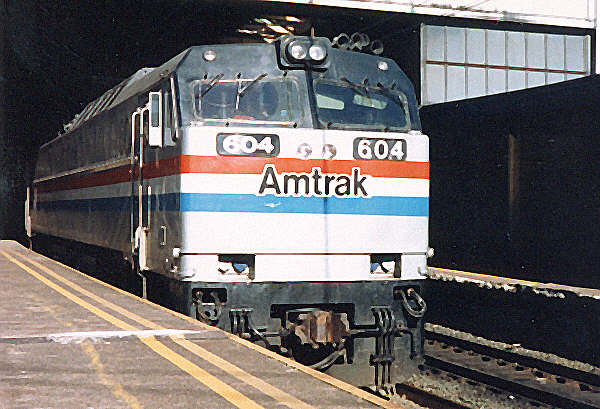
The prototype after being shipped from the manufacturer. (1986/11 Newark Penn Station, NJ)
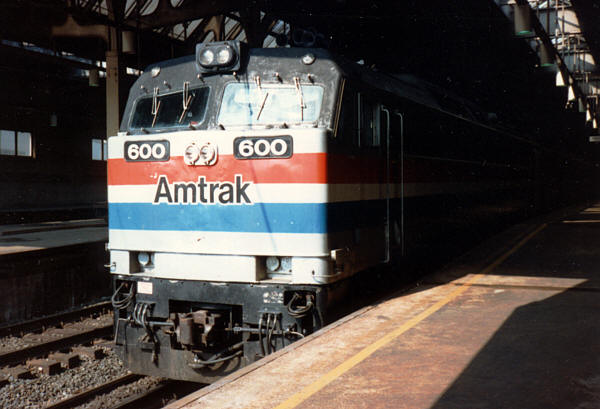
The light has been replaced with the same type as AEM-7.There was also an EL that was introduced on a trial basis, and the pantograph was also shared with the AEM-7 for a while.
(1987/3 Newark Penn Station, NJ)
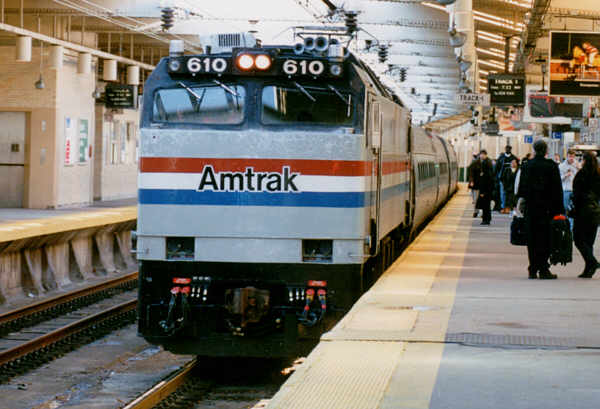
The light and number plate were installed on the top of the cab, and the pantograph was returned to the original model. It was called E60MA.
(1999/11 Newark Penn station, NJ)
E60CP then
10 E60CP cars were built in 1983.new jersey transitIt was loaned to and then sold. One of the 10 cars (No. 958) was transferred to the Railway Preservation Society, and No. 961 was transferred to NAVAJO Mining Railway.The remaining eight cars were dismantled at the Naparano, NJ factory.Amtrak's E60CP, except for Nos. 620 and 621, was modified to be equipped with HEP power, the motor and suspension were improved, and the E60MA was re-debuted as the 90mph-capable E60MA.After that, it gradually lost its role with the introduction of the new HHP-8, and was officially retired as of October 31, 2003.
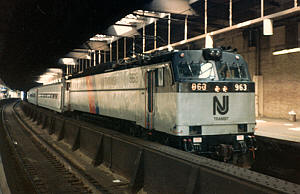
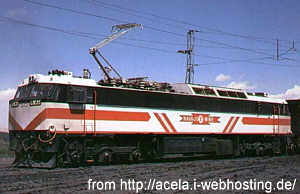
For those who want to see the actual E60CP car
Currently, Amtrak paint is used in Pennsylvania.Pennsylvania Railroad MuseumUnit 603 is preserved in .NJ TransitThe painting is not open to the public, butURHS of NJ(Boonton, NJ) is home to Unit 958. You can see it through the fence if you ride the Montclair-Boonton line.
E60CP model
E60CP was released by three companies.I have summarized it so please use it as a reference.
| scale | Manufacturer | Model number | detail | Appearance period | Sales status |
| N scale | Bachmann | 51-0655-05 | Single item Amtrak ph,II 951 (silver paint) | 1984 | End |
| Bachmann | 24007 | Set Amtrak ph.II 951 (metallic paint) | 1991? | End | |
| HO gauge | Bachmann | 0750, 41-0655-05 | Single item, Amtrak phII 951, Rock Island | 1978 | End |
| Bachmann | 65502, 65503 | Single item, Amtrak phII 971, ph III 974 | 2007 | Now on sale | |
| Walthers | unknown | Single item, Amtrak, NJT, PC, etc. | 1988 | End | |
| American goalkeeper | unknown | Single item, Amtrak, PC, NH, Bicentennial | 1979 | End |
